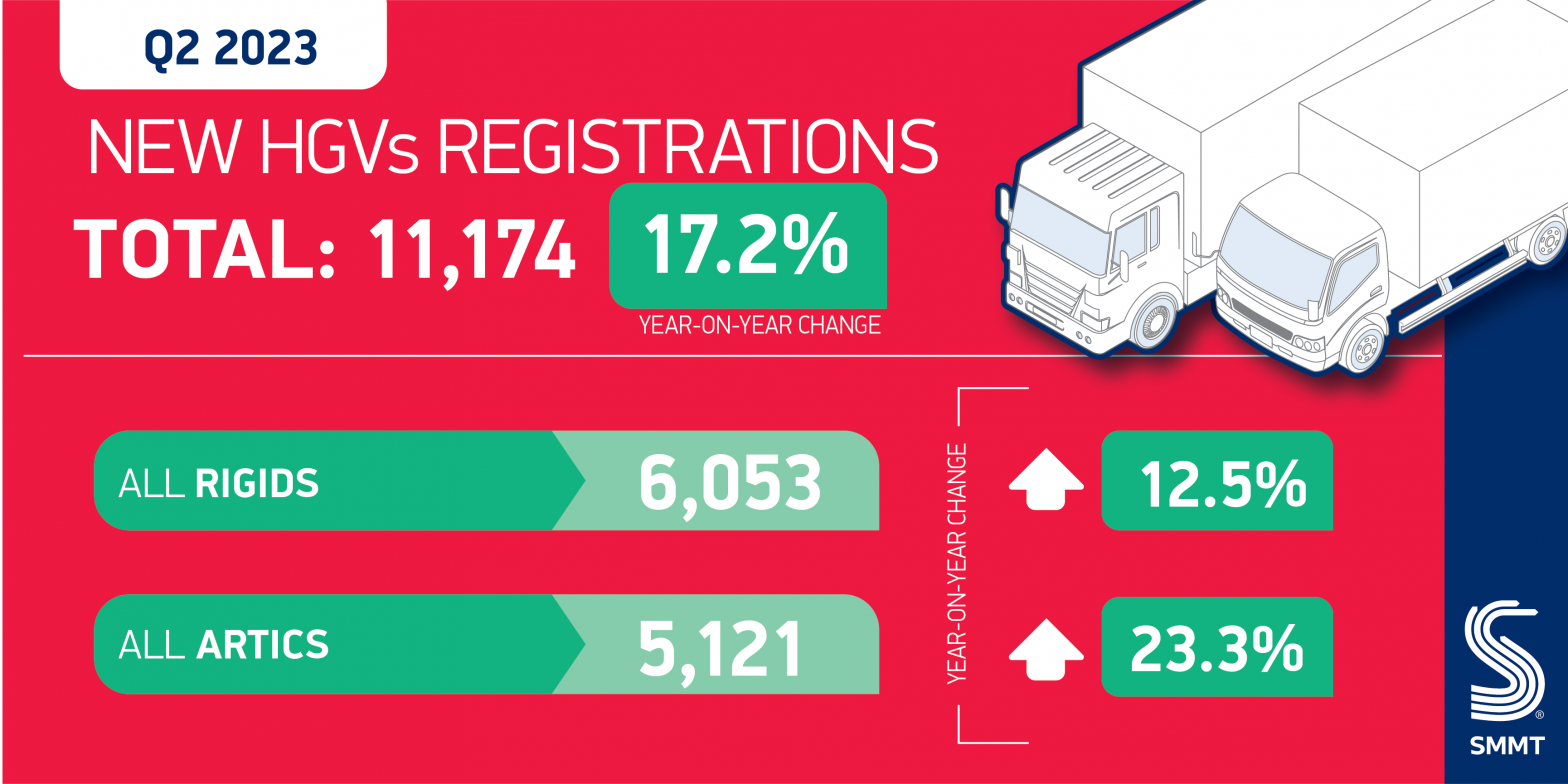New HGV market rises by 17.2% in Q2 2023 as fleet renewal returns to pre-pandemic levels. Double-digit growth for rigid and articulated trucks, with volumes up 12.5% and 23.3% respectively. Sector seeks sustainable strategy to spur depot investment and green fleet transition. SEE HGV REGISTRATIONS BY BRAND DOWNLOAD PRESS RELEASE AND DATA TABLE The UK… Continue reading Five quarters of truck fleet growth with UK operator demand back to pre-pandemic levels
Tag: Strategy
@VW Group: Peak sportiness: from the Audi S6 plus to the RS 6 Avant performance and RS 7 Sportback performance007671
plus! At the former quattro GmbH, these four letters represented the particularly sporty derivatives of what were already highly performaning RS 6 and RS 7 models. They adhered to the philosophy of leveraging as much car technology as possible, i.e., teasing out an additional plus in driving dynamics – while retaining the everyday usability the… Continue reading @VW Group: Peak sportiness: from the Audi S6 plus to the RS 6 Avant performance and RS 7 Sportback performance007671
TransMedics Completes Acquisition of Summit Aviation
ANDOVER, Mass., Aug. 16, 2023 /PRNewswire/ — TransMedics Group, Inc. (“TransMedics”) (Nasdaq: TMDX), a medical technology company that is transforming organ transplant therapy for patients with end-stage lung, heart, and liver failure, announced today the closing of its previously announced acquisition of Summit Aviation, a premier U.S. charter flight operator. The acquisition enables the establishment of… Continue reading TransMedics Completes Acquisition of Summit Aviation
Revolutionize your retail business with innovative EV chargers
The electric vehicle revolution is transforming the way we think about transportation, and as a retailer, you have a unique opportunity to be at the forefront of this transformative movement. EV chargers are not just the future – they are the present. Embracing the innovation and adoption of EV chargers can set your business on… Continue reading Revolutionize your retail business with innovative EV chargers
WashMe Holdings Revolutionizes the Car Wash Industry by Partnering Up with HokuApps and inkbyte to Build a Cutting-Edge Mobile App Which Gives Customers The Ability To Wash Their Cars At Any Partner Wash In The WashMe Network.
WashMe Holdings is a pioneer in the car wash space, building the first nationwide car wash membership platform using a multi-branded network of independent and franchise-owned car wash locations in the United States, and soon beyond. WashMe has quickly built their “Partner Wash Network” to over 70+ locations, across 13 states, seamlessly integrating platforms with… Continue reading WashMe Holdings Revolutionizes the Car Wash Industry by Partnering Up with HokuApps and inkbyte to Build a Cutting-Edge Mobile App Which Gives Customers The Ability To Wash Their Cars At Any Partner Wash In The WashMe Network.
GM backs EV battery startup as it shifts future focus to cheaper materials
LFP battery cells were developed in the United States, but Chinese companies such as BYD and CATL currently dominate global production. General Motors is investing in a Silicon Valley startup to help it speed development of a more affordable battery chemistry for its future electric vehicles, the company said on Wednesday. GM will lead a… Continue reading GM backs EV battery startup as it shifts future focus to cheaper materials
VinFast’s valuation overtakes Ford and GM on Nasdaq debut
HANOI/SINGAPORE (Reuters) — VinFast’s shares soared in thin trading in their Nasdaq debut on Tuesday following the Vietnamese electric vehicle maker’s $23 billion backdoor listing as the startup said it was likely to raise money from global investors within 18 months. The stock opened at $22, more than double the $10 per share agreed with… Continue reading VinFast’s valuation overtakes Ford and GM on Nasdaq debut
Intelligent Airways Transportation: Paving the Way for a Smarter Future – By The Business Research Company
The Business Research Company’s global market reports are now updated with the latest market sizing information for the year 2023 and forecasted to 2032 LONDON, Aug. 16, 2023 /PRNewswire/ — Intelligent airways transportation (IAT) has emerged as a transformative force in the aviation industry, revolutionizing air travel through the integration of advanced technologies and innovative… Continue reading Intelligent Airways Transportation: Paving the Way for a Smarter Future – By The Business Research Company
Steampunk Announces ICE SASS II Award
MCLEAN, Va., Aug. 16, 2023 /PRNewswire/ — Steampunk announced today that they have been awarded the U.S. Department of Homeland Security, (DHS) U.S. Immigration and Customs Enforcement (ICE) Security Assurance Support Services (SASS) II task order. ICE SASS II is a base plus 4-year contract with a total task order value of $174M. Steampunk began… Continue reading Steampunk Announces ICE SASS II Award
Assembly Ventures Announces Inaugural $76 Million Mobility Fund Focused on the Physical and Digital Movement of People, Goods, Data and Energy
Assembly Ventures has built the first transatlantic venture capital platform to invest in cutting-edge technologies in the mobility sector. Founded by trailblazers in the mobility sector with strong operational and investment credentials, this brings total assets under management on the platform to $94 million after closing. Substantial investment potential seen in mobility technologies is driven… Continue reading Assembly Ventures Announces Inaugural $76 Million Mobility Fund Focused on the Physical and Digital Movement of People, Goods, Data and Energy
